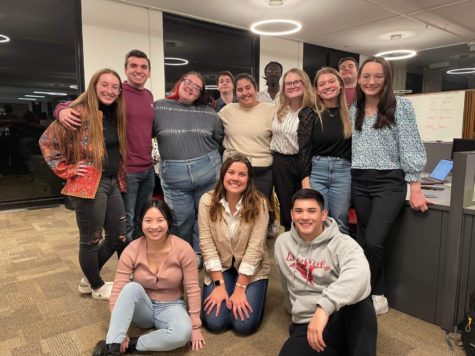Editorial: Latinx and Hispanic identity loss
The ISD Editorial Board examines the differences between the terms Hispanic and Latinx, as well as racial injustices in these subpopulations within the United States.
August 29, 2020
In today’s society, the words Hispanic, Latinx, Latina and Latino are often used interchangeably to address entire populations of people. Many people don’t understand the definitions of these terms and tend to assume, based on someone’s appearance, whether an individual identifies with these terms.
This lack of understanding is grouping millions of people together into a gray area of not white and not Black, even though Hispanic and Latinx people can be white, Black or Brown. Consequently, several Hispanics and Latinxs living in the U.S. have suffered identity crises. How do these play into each other and what are the effects of American culture on Hispanic and Latinx people?
Latinx is a gender-neutral term used to describe a person of Latin American descent. Latino and Latina are gender specific to distinguish between male and female, respectfully.
Hispanic, on the other hand, is used to describe someone from Spanish-speaking areas. Latinx is based on geography; Hispanic is based on language. For example, someone from Brazil is Latin American, but not necessarily Hispanic because the language spoken there is Portuguese.
It may shock you to hear three-fourths of Hispanics and Latinxs do not identify with either term. This may be due to the common incorrect use of both terms, blurring the definition of these labels.
Or, it could be from the melting pot the U.S. is referred to — a place where people of all backgrounds and cultures mix together: “creating a new culture — not necessarily a monolithic or homogeneous one, but one that is reflective of some sort of shared template for society.”
However, this idea of mass assimilation has been questioned by many for its failure to appreciate the differences in cultures. The term could be replaced with a salad bowl: all ingredients of the salad are in the same bowl, yet retain the qualities that differentiate them — such as their native language, religion and other aspects of their culture. In this way, American culture is not forcing people to strip their identities to belong in the U.S., but seeing and appreciating the differences in our backgrounds.
While this is the goal of the United States, life is quite different for many Latinxs and Hispanics who feel pressure to conform to U.S. culture and leave behind aspects of their identity that are not deemed “American” enough. In this video, several people recount how they seemed to lose more and more of their Latin or Hispanic identity as they grew up in the U.S. This video also brings attention to the racial diversity apparent in Latin American and Hispanic ethnicities, where Afro Latino, Asian Latin American and Chicano are just three examples.
Many people are wrong in their assumptions of Hispanic and Latinx appearances, which is contributing to the loss of identity in these groups. This is not always the case, fortunately. Some towns in Iowa, such as West Liberty, have high populations of Hispanics and/or Latinxs and are known to celebrate their cultural diversity.
On a deeper level, Hispanic and Latinx people face discrimination and racial or ethnic injustice at a comparable rate to Black people, yet the fight for Black Lives Matter dominates the news and social media, leaving less of a discussion about Brown injustices.
This may be due to the (literal and figurative) black and white perspective people view ethnic and racial conflicts with, pushing Brown people off into a gray area that faces similar difficulties as Black people, but not necessarily the same fight for justice.
That is not to say Latinx and Hispanic people are not fighting for justice, but Black equality movements are much more accessible. For example, according to the Washington Post, “between 2015 and April 2020, Black Americans are killed at the highest rate in the U.S. (31 per million residents).” Latinos are killed at the second-highest rate, 23 per million residents, according to the newspaper’s analysis. Both are disproportionate rates considering their percentages of the population.
Black Lives Matter rightfully dominates the media, but where is the outrage over the violence and injustice Latinx and Hispanic people face every day as well?
Unfortunately, the constant degradation of Brown people as not white and, therefore, less than white may also contribute to internal racism. The organization Taking Action Against Racism in the Media defines this as “a personal conscious or subconscious acceptance of the dominant society’s racist views, stereotypes and biases of one’s ethnic group.”
Of course this is in no way the fault of the people being excluded from the privileges of “looking American,” but is a consequence of the gray area white Americans (consciously or subconsciously) put them into.
Latinx and Hispanic identity loss is a complicated issue that ties into aspects of American culture and the melting pot of assimilation, the tendency to push nonwhite and non-Black ethnicities into a gray area and the lack of media attention over ethnic and racial injustices.
There is no simple solution to the obstacles facing Latinx and Hispanic people, but becoming aware is always a good place to start.

















